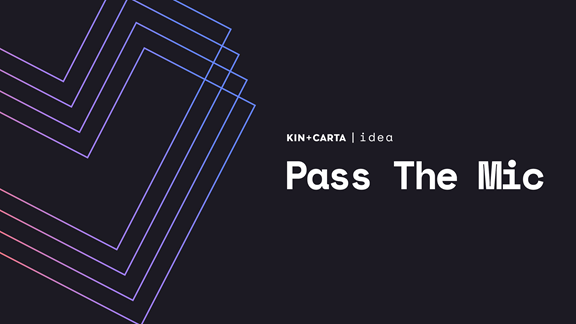As part of Pride Month, Elliot Fortune, Strategist at Kin + Carta Connect, shares their lived experiences and learnings with us around why Pride Month needs to be more than just a logo change and a panel discussion.

Not Just Rainbows
I have a complicated relationship with Pride Month and Pride parades. The rainbow flags that crop up seemingly overnight are designed to make me, and people like me, feel welcome and celebrated. A lot has already been written about ‘rainbow washing’ and why it’s frustrating at best, and harmful at worst.
Today, I want to talk about the fact that Pride Month is a mixed bag for many LGBTQIA+ folks, because we often don’t get to do a lot of celebrating, instead spending the month trying to instate change that outlives the rainbow flags on social media. The parade is often the one event during Pride Month where we get to be in our communities and just revel in them - and even those have become increasingly capitalised and commercial.
So what is Pride Month in 2021? Strap in kids, this is a long one.
What does it mean to be out and proud?
Being “out” is a privilege, first and foremost. Not everyone has the ability to come out - it can be an enormous risk to your personal safety or financial security to be out, even in London in 2021. Those of us over the age of 35 remember Section 28 in the UK, and queer Americans over 30 will remember the horrific murder of Matthew Shepard in 1998.
I was 14 in 2000, when my home state of Vermont legalised civil unions for same sex couples (marriage didn’t come until 2009). Part of that process, however, was hearing my classmates, neighbours, and extended family members express their disgust at LGBTQ+ people - it was seeing signs on front lawns saying that people like me were abominations, that we were dangerous, and didn’t deserve equal rights. At school, anyone suspecting you weren’t straight or cisgender was enough to get beaten and bullied. This was in 2000, in one of the most liberal states in the US, one of the first to add sexual orientation to protected characteristics in the 90s.
Choosing to be out, to be visible in a public-facing way, is a privilege afforded to very few of us. I have the relative safety of my skin colour, living in a country where I am legally protected from being fired for who I am, and of financial independence and stability. I have citizenship here. And I still get nauseous thinking about being tagged in a tweet while speaking about my experiences as a queer transgender person. We still have a long way to go as a society, as a country, before all LGBTQIA+ people have equal rights and Pride is a big part of how we continue to shine a light on the situation.
Pride Parades: A protest in all forms
Everyone should have a basic understanding of the origin of Pride parades by now. They always have been, and always will be, a protest first and celebration second. In many (but certainly not all) countries across the world, we can celebrate equal marriage rights and legal protection from discrimination on the basis of gender or sexual orientation. In others, the act of gathering and openly declaring our presence is enough to be beaten and arrested.
My first Pride parade was in London, in 2015, and I remember feeling completely overwhelmed by how many people there were. How happy everyone was. The entire day is a bit of a glittery haze now. Pride in London 2016 was the first time I marched. I had just returned from holiday the day before, and essentially rolled off a plane and down to the parade. By the time we reached the end of the route, I was weeping openly. It wasn’t just the outpouring of support for the community, it was seeing kids with their families. Kids wrapped in our flags, in their flags, lifted high by their parents and friends. Faces painted, and awed at seeing an endless stream of people just like them, thriving.
I marched in 2017 and 2018, taking a break in 2019 after a knee injury benched me. I marched while questioning my gender. I marched while waiting for hormone treatment. I march every year I’m able because I want those kids to see that they too can grow up and thrive. My continued existence and happiness as a trans bisexual person is a protest in itself. The gathering of my community to celebrate our existence is a demonstration in the face of a society that continues to chip away at our rights.
This Pride Month, commit to action
In London, in 2021, I have the luxury and privilege of using my platform to talk about what it’s like to be trans and queer. I get to be out, visible, and present in all areas of my life. So this month, for me, is about shining a light on the ways that others can support people like me who may not have that luxury. It’s not just about having a rainbow icon or a Pride float - it’s about your company policies, how you include LGBTQIA+ customers and users, the way you speak to and about your colleagues.
This Pride Month, I would love to see every single person who reads this blog to commit to an action of allyship. That action could be as simple as adding your pronouns to your email signature and social media page or as large as getting a team together to review your internal policies for gendered language and LGBTQIA+ inclusion (e.g. is your parental leave policy inclusive of same sex couples and trans parents?).